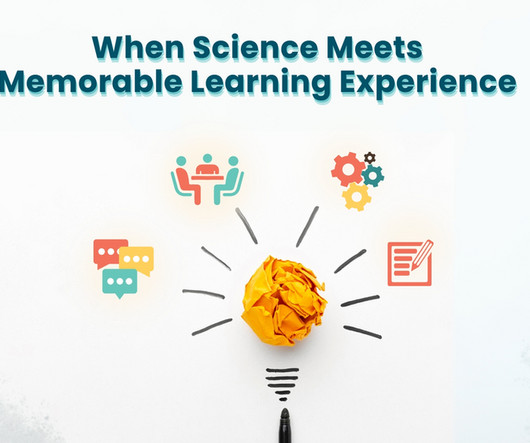Benefits of Scenario-Based Learning
Experiencing eLearning
DECEMBER 15, 2020
Ruth Clark’s book Scenario-Based e-Learning: Evidence Based Guidelines for Online Workforce Learning explains how scenario-based elearning helps people learn new skills faster. question builds quick and fun repetition into the training programme, helping transfer from short term memory to long term memory.

































Let's personalize your content